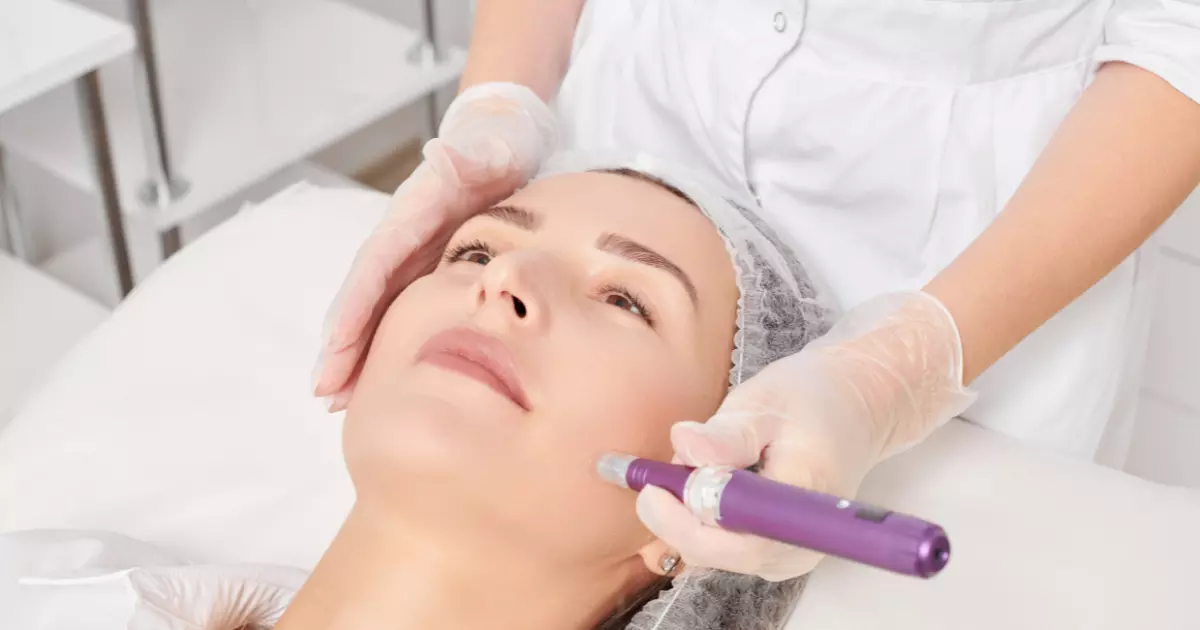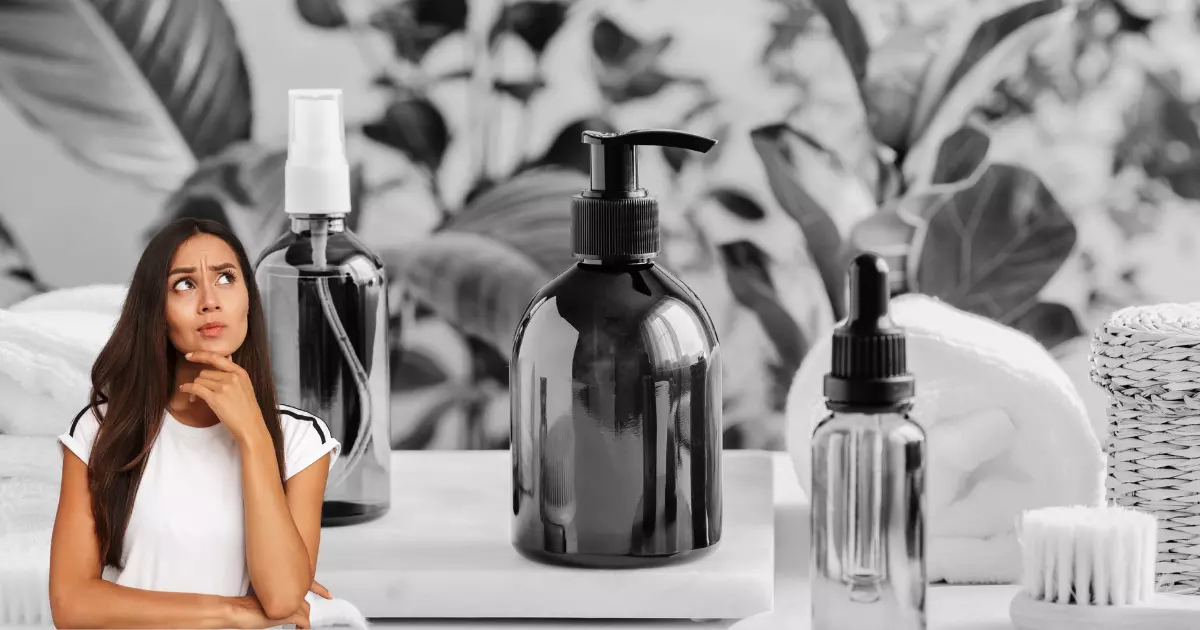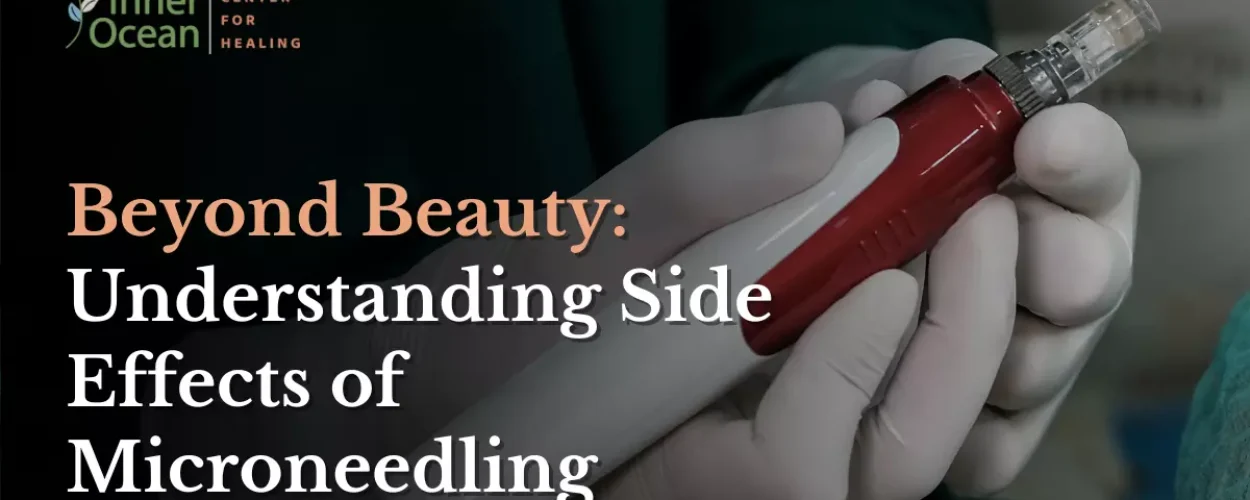In the ever-evolving landscape of skincare, microneedling has emerged as a revolutionary cosmetic procedure. It captivates beauty enthusiasts with its transformative potential. The precise insertion of tiny needles stimulates collagen production and skin elasticity. The microneedling technique penetrates the deep layer of skin and promotes a youthful glow.
However, like any other invasive procedure, it comes with side effects. Understanding the side effects and risks of microneedling is essential. Your knowledge is your greatest ally and ensures your skin story is a success.
This blog post will help you turn your microneedling appointment into an informed decision. We’ll also discuss the typical healing timeline after a microneedling session. Most importantly, we’ll provide tips on how to ensure your skin’s story is a success.
Ready to turn your microneedling appointment into an informed decision? Keep reading to transform your skin concerns into a canvas of confidence.
How Long Does Microneedling Take to Heal?
The healing time after microneedling can vary from person to person. It depends on factors such as skin conditions and the depth of the treatment. The specific microneedling device used also matters. Generally, the initial healing phase takes about 2 to 7 days after the microneedling procedure.
Here’s a breakdown of the typical healing timeline after a microneedling treatment:
Immediate to 24 Hours After Treatment
It is common to experience a sunburn-like effect, especially those with sensitive skin. This is a natural reaction to the micro-injuries made during the microneedling procedure. You can use gentle cleansers and cool water to soothe the skin. It is vital to avoid strenuous exercise and exposure to UV radiation as these can exacerbate skin irritation.
24 to 72 Hours Post-Procedure
During this period, the skin starts to heal. You’ll notice a reduction in redness and any mild swelling. Keeping your skin hydrated is an essential part of your treatment plan.
You can use hyaluronic acid serums in your aftercare routine. A dab of gentle moisturizer can also enhance dry skin. It’s also important to continue protecting the skin from sun damage with a broad-spectrum sunscreen.
Read also: Before and After Microneedling: Things You Should Know
Up to One Week After Microneedling
The skin’s texture and tone begin to improve noticeably. The natural healing process stimulates collagen production. As a result, it reduces acne scars, fine lines, and uneven skin tone.
At this stage, you can reintroduce regular skin care products. However, it’s wise to avoid harsh chemicals to minimize the risk of infection. Don’t use exfoliating agents also as these might irritate the skin.
This is when the real magic happens. Production of collagen and elastin are in full swing. Collagen contributes to skin tightening and overall skin rejuvenation. For many, this is the time when the results of the treatment shine. Microneedling benefits reveal healthier skin with improved skin texture.
Beyond Four Weeks
Further improvements continue to manifest for several weeks. The visible signs of the procedure largely disappear. But it is important to note that the healing response depends on the individual’s skin type. The nature of the microneedling treatments is also a factor to consider.
What Are The Common Side Effects of Microneedling?

Microneedling is generally considered a safe procedure for the improved appearance of skin. But like any therapy for skin rejuvenation, it may come with some common side effects. It’s important to note that these side effects are normal after a microneedling session.
Here are the common microneedling side effects:
Redness
Immediately after the procedure, it’s common to experience redness in the treated area. This is one of the most common microneedling side effects. Picture a mild sunburn-like effect on your skin tissue. This is a result of increased blood flow and inflammation. Don’t panic because it usually subsides within a day or two.
Swelling
Some degree of swelling is common, especially in areas with thinner skin. So, stay calm if your skin feels slightly puffy or swollen. This is a normal reaction due to micro-injuries from sterile needles. Swelling is usually mild and should diminish within a few days.
Tenderness
Like after any skin trauma, your skin may feel tender or sensitive to the touch. This sensitivity is a natural response to the micro-injuries created during microneedling. Your skin cells work overtime to repair and rejuvenate. It subsides within a few days.
Dryness and Peeling
As the skin heals, it may become dry and start to peel. The peeling is similar to chemical peels that lighten darker skin tones. This is a normal process of shedding dead skin cells and improving skin imperfections. When these are over, you’ll enjoy a new, rejuvenated skin.
Bruising
Depending on your skin type and the needle size used, some might experience light bruising. This occurs due to blunt needles penetrating small blood vessels beneath the skin. However, bruising should be minimal and heal on its own.
Itching
As your skin heals and collagen synthesis occurs, it may cause a temporary itchy sensation. This is a normal part of the healing process. It’s important not to scratch the treated area to prevent irritation or bacterial infections. If itching persists, consult with your dermatologist for appropriate recommendations.
Sun Sensitivity
Microneedling can make the skin more sensitive to sunlight. So you need to avoid direct sun exposure. Post-treatment, your skin becomes more susceptible to sun damage.
This heightened sensitivity means extra care is necessary to protect your skin from UV radiation. If you need to go outside, wear a wide-brimmed hat. Make sure to apply sunscreen with a high SPF when going out.
How to Manage Common Side Effects of Microneedling?
The above-mentioned are mild side effects of microneedling. Those are normal skin reactions. A bunch of needles create tiny punctures in the deeper layers of your skin. Here are tips to manage those side effects:
Apply A Cold Compress
Cold temperatures have a natural anti-inflammatory effect on the skin. Skin inflammation is a result of physical trauma to the skin issue. Cold compresses can help attenuate the inflammatory response.
When using a cold compress after microneedling, it’s essential to do so with caution. Apply the cold compress for short durations. Preferably 10-15 minutes at a time. This duration helps you avoid prolonged exposure to cold, which can have adverse effects.
Also, you must avoid direct contact. Place a thin cloth or towel between the cold compress. This will help you prevent frostbite or cold sores.
Dab A Gentle Moisturizer
Moisturizers are good topical medications for peeling and dryness. Moisturizing also helps reduce skin imperfections. Nowadays, many moisturizers contain soothing and calming ingredients such as aloe vera and chamomile. These ingredients have anti-inflammatory properties and can help alleviate mild side effects. Look for products labeled as “gentle” or “calming” to ensure they are suitable for microneedling aftercare.
When dabbing on a gentle moisturizer, these are important things to bear in mind. Make sure your hands are clean before applying any product. This will help you avoid introducing bacteria to the treated area.
Also, use a light touch when applying the moisturizer. Avoid rubbing or pulling on the skin, especially in the treated areas. Choose a moisturizer that is specifically formulated for sensitive or post-procedure skin. Prevent using products with harsh ingredients, fragrances, or active ingredients that may irritate the skin.
Hydrate The Skin
Hydrating the skin is necessary after aesthetic treatment. A well-hydrated skin heals the minimal side effects more efficiently. Dry and peeling skin gets uncomfortable and may prolong the recovery process.
To hydrate the skin effectively, use a gentle moisturizer. Choose a mild, hypoallergenic moisturizer that is free of irritants. Look for ingredients like hyaluronic acid, glycerin, or ceramides. These ingredients help maintain the hydration level and improve skin imperfections. Refrain from using glycolic acid as this can cause dryness and irritation.
Put Arnica Gel or Cream
Arnica gel or cream is a good topical treatment for bruising and inflammation. It is also used for healing facial scars. For the best result, follow the instructions provided on the Arnica product you choose. Typically, you would apply a thin layer to the affected area a few times a day. Avoid applying arnica to broken skin or open wounds.
Use Hypoallergenic Lotion
The micro-injuries created during microneedling can make the skin more sensitive. Using a hypoallergenic lotion after microneedling may help reduce itching. This topical product also promotes comfort during the healing process.
Though hypoallergenic lotions won’t cause allergic reactions, it’s good to do a patch test first. Doing so ensures you don’t have any adverse reactions. It also eliminates potential active infection when applied to recently treated skin.
However, only use the lotion that your skincare professional recommends. Use it as well according to the product instructions. Only apply a thin layer to clean, dry skin.
Opt for Sunscreen with SPF 30
Choosing a sunscreen with SPF 30 or higher can help reduce sun sensitivity after microneedling. It provides effective protection against both UVA and UVB rays. UVA rays can contribute to premature aging and pigmentation changes. While UVB rays are responsible for sunburn.
What Products Should You Avoid After A Microneedling Session?

After microneedling, it’s crucial to know the products you can use on your skin. Remember that cosmetic products can hinder proper healing and cause potential irritation. Here are many types of products to avoid after a microneedling session:
Harsh Cleansers
Avoid using cleansers with harsh chemicals, strong acids, or abrasive particles. They can cause irritation. Opt for mild, fragrance-free cleansers to gently cleanse your skin.
Exfoliating Products
Steer clear of exfoliating scrubs or products containing alpha hydroxy acids (AHAs), beta hydroxy acids (BHAs), or retinoids. These can be too harsh on the newly treated skin. They can be too abrasive for freshly treated skin. Using them can cause skin irritation and adverse reactions.
Alcohol-Based Products
Alcohol is an active ingredient that can dry out and irritate your skin. Avoid toners or astringents with alcohol in the immediate post-microneedling period. It’s best to opt for alcohol-free formulas to avoid additional skin inflammation.
Fragranced Skincare
Fragrance in skincare can trigger allergic reactions on sensitive skin. Choose unscented products to reduce the risk of irritation. Look for hypoallergenic options for your post-treatment routine.
Makeup with Heavy Formulas
Avoid applying heavy or full-coverage makeup immediately after microneedling. Allow your skin to breathe and heal. Thick makeup can clog treated areas which leads to cross-contamination. Heavy makeup can also cause acne breakouts.
Retinol or Retinoid Products
These products can be too aggressive for recently treated skin. They can also cause severe side effects. Postpone the use of retinol or retinoid-containing products after a microneedling session. Wait until your skin care professional gives the green light.
Vitamin C Serums with Low pH
Vitamin C serums are beneficial for collagen induction therapy. But they might cause irritation. They can get too intense immediately after microneedling. Their high potency can cause severe side effects on sensitive skin.
Anti-Aging Formulas with Strong Actives
Avoid using anti-aging formulas with strong actives. Those strong anti-aging ingredients are peptides, growth factors, or powerful antioxidants. They may pose potential risks in the first few days post-microneedling.
Oily and Comedogenic Products
These products can exacerbate pore-clogging, causing active acne and acne scars. This is especially harmful for those with darker skin types. Patients with dark skin need to show caution. Though microneedling is a safe procedure, the treatment can lead to hyperpigmentation.
What Are The Potential Risks Associated With Microneedling?
There are several benefits of microneedling that beauty enthusiasts can enjoy. However, when the treatment is not done properly, it can cause potential risks. Understanding these risks is crucial for anyone considering this effective procedure.
Infection
The creation of tiny wounds in the skin can open the door for bacteria. When you don’t follow proper microneedling aftercare, it can lead to infection. It is vital to consult only with professionals. Make sure that they sterile their tools such as needles and microneedling roller devices. They should also have a clean environment before they conduct a microneedling session.
Allergic Reactions
Some individuals might experience allergic reactions to serums or topical treatments used during or after the procedure. Always disclose your medical history and allergic reactions to your practitioner. Being honest ensures your skincare journey is nothing but smooth sailing.
Hematoma
Those on blood thinners or with bleeding disorders may experience bruising or hematoma. The needle size and depth play a role in this risk. If you’re on blood thinners, have a chat with your practitioner to minimize this risk.
Scarring
One of the advantages of microneedling is its ability to improve the appearance of scars. However, scarring may occur when done incorrectly. Improper technique or overly aggressive treatment can cause new scarring.
Hyperpigmentation or Hypopigmentation
People with dark skin have a higher tendency towards pigmentation disorders. Microneedling can sometimes cause areas of darker (hyperpigmentation) or lighter (hypopigmentation) skin.
Excessive Irritation
Overly sensitive skin might react with excessive redness or irritation. It is a must that you use hypoallergenic aftercare products. Following a gentle skincare routine can also mitigate this risk.
Herpes Reactivation
For those with a history of cold sores, microneedling can potentially trigger herpes reactivation. Prophylactic treatment with antiviral medication is advisable.
Unwanted Hair Stimulation
In rare cases, stimulating the hair follicles can lead to unwanted hair growth. This occurs particularly in areas like the face.
What Do I Need To Do If I Experience Adverse Reactions?
Experiencing adverse reactions, though relatively uncommon, can be concerning. Taking the right steps is crucial if you find yourself in such a situation. These will protect your skin’s health and give you peace of mind.
Firstly, it’s essential to recognize what constitutes an adverse reaction. Common side effects like mild redness or swelling are typical post-microneedling. They usually subside within a few days.
However, if you notice more severe symptoms, those are your green light to take action. Severe symptoms include intense itching, prolonged swelling, and signs of infection like pus. Watch out for severe redness or pain, or unusual skin changes like dark spots or atrophic scars as well.
In the event of such reactions, the immediate step is to cease applying any products that could exacerbate the condition. Avoid collagen-stimulating treatments, acne treatments, and products containing salicylic acid or other strong exfoliants. These can irritate the already sensitive outer layers of your skin.
Next, contact the healthcare professional who performed your microneedling treatment. Provide them with an objective assessment of your symptoms. Explain in detail about what you’re experiencing. If possible, send them photos. This information will help them determine whether your reaction is within the expected range of side effects of microneedling or if it’s something more serious.
If you cannot reach the professional who treated you, it’s advisable to seek medical attention immediately. Certain conditions, like infections, need prompt treatment to prevent complications.
When to Seek Professional Help?

Knowing when to seek professional help is crucial. Your decision to contact a healthcare professional saves you money and from further stress. Here’s your guide that will help you navigate your microneedling journey.
One primary reason to seek help is if you experience signs of infection. Those can be increased redness, warmth, and perhaps pus around the treated area. If you notice any of these symptoms, it’s time to contact a healthcare provider.
Another scenario warranting professional advice is if you develop severe or prolonged skin reactions post-microneedling. Experiencing mild acne treatment-like reactions are normal. But extensive skin irritation and increased dark spots that persist are not. If the intensity does not subside after a couple of days, immediately consult your doctor.
If you have pre-existing skin conditions, consulting a professional post-treatment is advisable. Those skin conditions include atrophic acne scars and varicella scars. Immediately seek medical attention if you are prone to keloid scars as well.
Microneedling involves creating controlled micro-injuries to the skin. The treatment can sometimes exacerbate certain conditions.
They can also advise whether additional treatments, like radiofrequency treatment or autologous platelet-rich plasma therapy, are safe for you.
Allergic reactions are another critical area. If you experience symptoms like hives, itching, or swelling seek medical attention. Look if they spread beyond the treated area.
Other symptoms like difficulty in breathing and fever also need professional assistance. These could be a reaction to products used during the procedure. Sometimes, these can be a response to the treatment itself.
Lastly, if you notice no improvement or worsening of your skin concerns after several sessions, it might be time to reassess your treatment plan. Microneedling can offer significant benefits for collagen growth and improve the appearance of scars. But it is not a one-size-fits-all solution. Sometimes, an alternative approach or additional treatments are necessary.
Wrapping Up
While microneedling is a generally safe and effective procedure, being attentive to your skin’s response is essential. Always consult with your healthcare provider or a dermatologist if you experience unusual side effects. Reach out to your doctor who performs your microneedling session if your skin isn’t healing as expected. Your journey to skin rejuvenation should be as safe as it is effective. Remember, when it comes to microneedling and skincare, seeking timely professional advice can make all the difference.
At Inner Ocean Center for Healing, we accompany our clients in their microneedling journey. Our licensed and experienced practitioners conduct safe and effective treatment. We always provide detailed consultation before starting a microneedling session. Through this, we ensure that our clients understand what microneedling is, from its benefits to its side effects.
Are you ready to harness the power of microneedling? Contact us and let us help you bid farewell to skin concerns.


